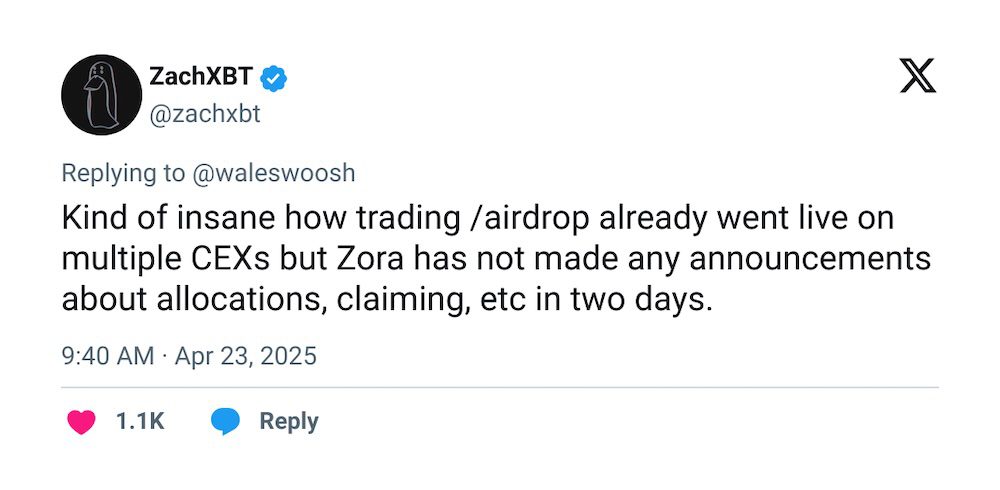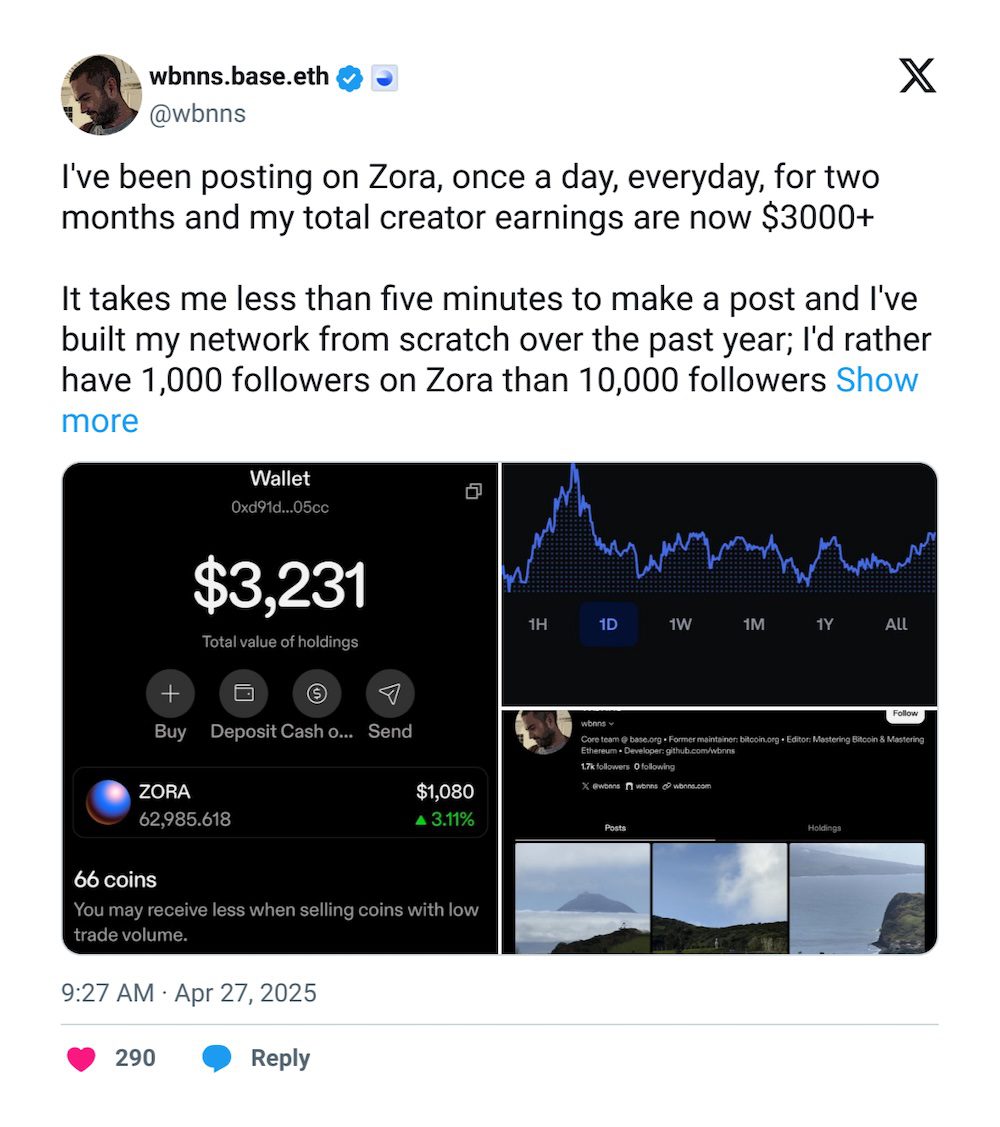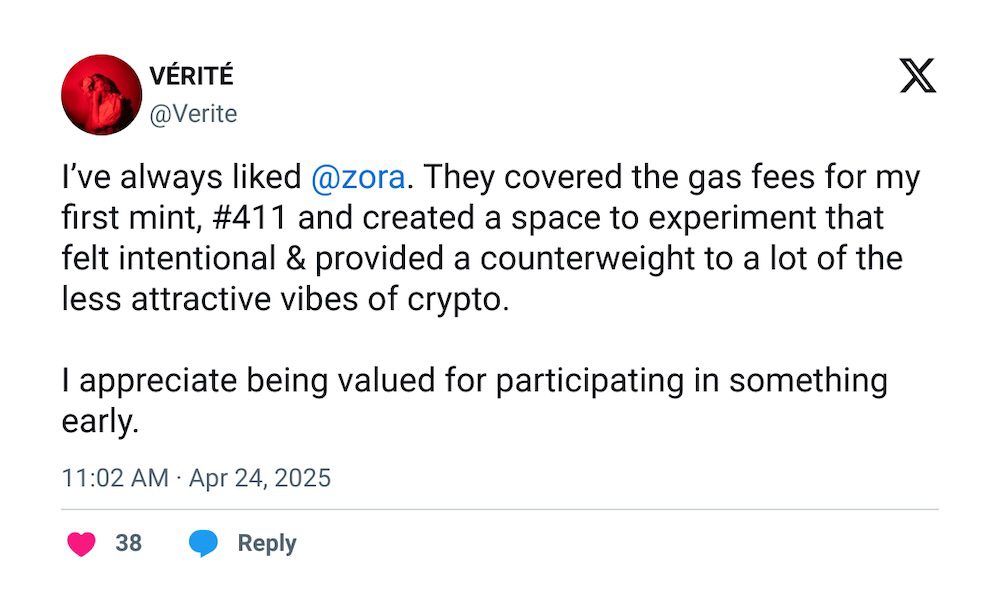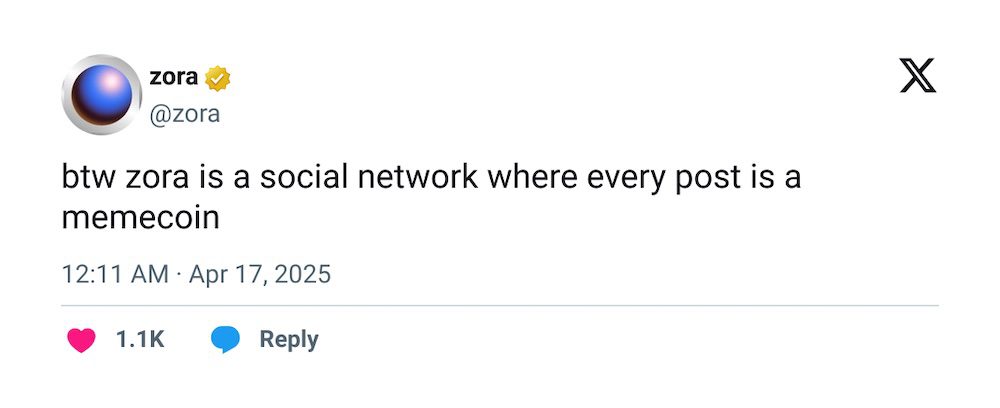The Web3 creator economy is undergoing a significant transformation. While platforms like Zora initially gained traction with NFTs, the recent launch of ZORA tokens and the subsequent shift towards “content coins” have sparked debate and reflection on the role of blockchain in empowering creators.
Zora’s Token Launch and the Controversy
Zora’s token launch on April 23 was met with mixed reactions. The token’s price plummeted shortly after its release, triggering user dissatisfaction. Concerns arose from:
- Lack of Communication: Critics pointed to Zora’s delayed announcement of the token launch.
- Tokenomics: The allocation of tokens, with a significant portion reserved for the team and investors, raised concerns about fairness.
- Utility: Initial ambiguity surrounding the ZORA token’s utility led to questions about its purpose.

Despite the criticism, some users defended Zora, highlighting the financial opportunities the platform has provided. Singer Vérité, an early adopter of Web3 technologies, expressed appreciation for being rewarded for her participation.
The Shift from NFTs to Content Coins
Zora’s move away from traditional NFTs towards memecoins (content coins) represents a strategic adaptation to evolving creator needs. Each post on Zora now generates a tradable memecoin, offering creators a stake in their content’s success.

Adam Levy, host of the Mint podcast, believes this shift caters to a new generation of creators focused on viral content and memetic culture. This aligns with the success of memecoin launchpads like Pump.fun, indicating a changing landscape in the creator economy.
The Decline of NFTs and the Search for Alternatives
NFT sales have significantly decreased from their peak in 2021, prompting creators to explore alternative models. The perceived shortcomings of NFTs, including a hyperfocus on speculation, have led some to abandon the space altogether. Music NFTs, once popular on platforms like Zora, have been particularly affected.

Sound.xyz, a prominent music NFT platform, has shifted its focus to Vault, a platform that utilizes blockchain technology in a more subtle way. This reflects a broader trend towards prioritizing user experience and minimizing the emphasis on blockchain specifics.
David Greenstein, co-founder of Sound, attributed the decline in NFT interest to excessive speculation, which overshadowed the focus on artists and their work.
The Future of the Onchain Creator Economy
Despite the challenges, many remain optimistic about the potential of blockchain in the creator economy. The key lies in finding innovative ways to leverage the technology while addressing the limitations of previous models.
Key Perspectives:
- Vérité: Advocates for solving problems facing artists and audiences, regardless of the technology used.
- Adam Levy: Maintains conviction in NFTs, emphasizing the early stage of cryptocurrency adoption.

Hiding blockchain elements to improve user experience is another emerging trend. Run The Jewels, for instance, rewards fan club members with “JWL” points (an onchain token) without explicitly highlighting the blockchain component.
Renata Lowenbraun, CEO of Infanity, stresses the need for easier-to-use crypto wallets to facilitate broader adoption. She believes blockchain’s potential for creative ventures remains significant, similar to the long-term adoption of the internet.
Latashá emphasizes the importance of artists building their own platforms, taking control of their creative worlds and avoiding dependence on centralized platforms. She argues that this is where the future lies.
In summary, the Web3 creator economy is evolving beyond NFTs, with content coins, improved user experience, and artist-led platforms emerging as key trends. While challenges persist, the ultimate goal remains: empowering artists and fostering greater independence within the digital landscape.